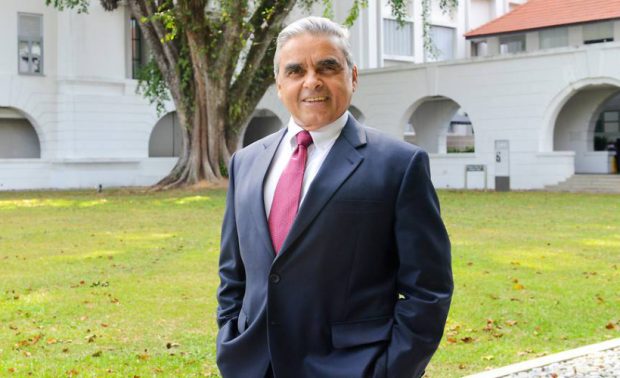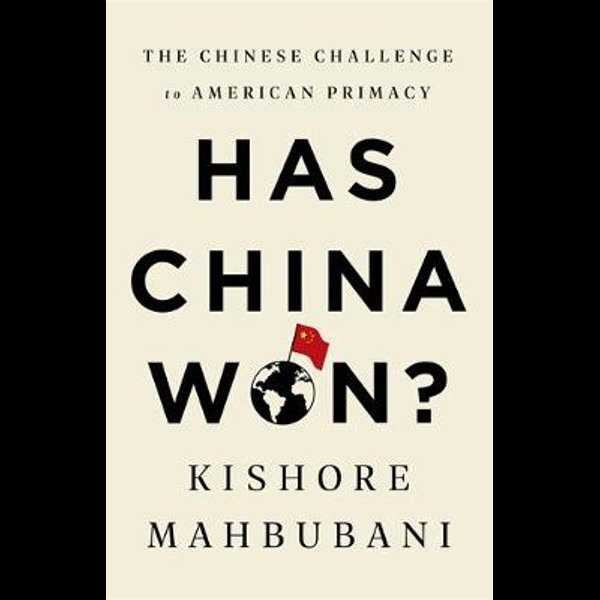Trump in blame-game spree as COVID-19 death spiral soars

Singapore’s former United Nations Ambassador Kishore Mahbubani
By Ivan Lim
Former AJA President, Contributor to AsiaN
SINGAPORE: As the toll in the United States from the novel pneumonia super-bug exceeded 20,000 deaths and reached more than half a million confirmed cases by Easter Friday, President Donald Trump began hitting out at the World Health Organisation (WHO), faulting it for being too focused on China and not giving any early warning of the danger to the West.
Since it first surfaced in the Chinese city of Wuhan in December 2019, the C0VID-19 virus has spread, according to April 14 figure, to more than 190 countries, infecting 1,925,190 people and killing 119,701.
With the epi-centre in Wuhan, the Coronavirus, a more aggressive resurgence of the Severe Acute Respiratory Syndrome (SARS) progeny, snatched away 3,340 lives out of 82,249 taken ill, before it was tamed. But fears of a second wave onslaught surfaced as 108 new cases were reported on Sunday.
Even as the invisible SARS II virus went global, governments scrambled to deal with the lethal invasion of the pathogen -some coping better than others.
Witness the trail of sickness and death until recently in the Corvid-19’s wake:
Asia and Middle East – Iran (73,000 cases; 4,500 deaths), South Korea (10,560; 220), Japan (7,640; 140), India (10,450; 360), Pakistan (5,700; 90), Indonesia (4,550; 400), Malaysia 4810; 77), Thailand (2,180; 40), Egypt (2,190; 160), United Arab Emirates (4,520; 25), Turkey (61,050; 1,290), and the Philippines (4930; 320).
Europe – Italy (160,000; 20,460), Spain (170,000; 17,750), France (9,136,780; 14,960), Germany (130,070; 3,190), United Kingdom (88,620; 11,330) 9,800) Belgium (30,590; 3,900), Netherlands (26,550; 2,820) Switzerland (25,688; 1,138), Russia (18,320; 150), and Sweden (10,950; 919)
North America: United States (587,340; 23,650) and Canada (25,680; 780).
The phrase “war footing” came into increasing use as these countries galvanised themselves to deal with the menacing, invisible enemy. Even Singapore, one of the Southeast Asian states to respond early, introducing a string of measures, including travel restrictions, to halt the spread of the initially named Wuhan virus, now has to grapple with a second wave of “close-encounter” infections centred largely on foreign workers cooped up in dormitories. Yesterday saw a spike of 386 cases, bringing the total to 2,918 with nine deaths.
The city-state of 5.7 million had to impose a lockdown with strict stay-indoor orders from April 7 to May 4 to try to break the human chain of transmissions.
Striking out on its own, the United Kingdom was prepared to let the virus spread among the community, hoping to create what is called a herd immunity, its strategy to beat the virus without putting in place WHO-mandated mitigation measures. It had since hastily changed tack after surge in COVID-19 cases.
The United States, the last of the Western countries struck brutally by COVID-19, had appeared to have been lulled initially into a false sense of complacency, if not security, by its experience of the seasonal flu, which appears and recedes from season to season and is shrugged off by many though the total death toll could be high.
The first COVID-19 death in the US was reported on February 29, and since then the toll of infections and death has been punching up. Trump boasted that he was quick to respond to the superbug threat by imposing travel restrictions as far back as January 31 against China, and began indulging in name-calling, describing COVID-19 as the Chinese virus and, alternatively, the Wuhan virus.
Whatever containments measures he did take up came too late as Covid-19 cases spiralled out of control in Washington State, New York, New Jersey, Missouri, Chicago, Boston and New Orleans.
Strangely, the US had dismantled its crucial pandemic response team in 2018, the consequence being it was ill-prepared to tackle the now-raging outbreak – Frontline states found themselves running short of diagnostic test kits, masks, gloves and personal protective gear, compelling a rush for orders from overseas. Makeshift hospitals had to be set up frantically to cope with growing queues of COVID-19 patients.
As the severity of the virus spread hit home, with forecast of 100,000 -200,000 casualties, Trump was under pressure to shut down schools and businesses and enforce stay-home orders. Yet he hesitated, out of concern the drastic measures would hit the market and set back economy and spoil his re-election prospects in November.
It was only on March 16 – a week after WHO declared a global pandemic – that he proclaimed a national emergency and ordered a lockdown until April 30.
On March 25, Captain America was speaking confidently, if prematurely, of putting the virus rampaging virus back into the bottle and getting back to normal by Easter. To distract attention at home and brickbats from critics over his slack response to the crisis, the POTUS began lashing out at the “China-centric” WHO and threatened to cut off its $400 million funding compared to China’s $40 million.
He got this retort from WHO director-general Dr Tedros A. Ghebreyesus: “Please don’t politicize this virus. The focus of all parties should be to save their people. If you don’t want more body bags, then you refrain from politicising.”
The WHO earned Washington’s ire, as also that of some other critics, because its officials were working closely with the Chinese. It did not think that travel bans like that imposed by the US on China would be effective in slowing down the virus spread, thereby offending Mr Trump.
Amid the on-going US-China spat over trade and security issues, it was feared in some quarters that the blame game would only undercut the joint efforts by their scientists and experts to develop a vaccine for the SARS II pathogen.
Weighing in separately on the point that the world is in the same boat in the face of a common enemy – the COVID-19 -, Singapore’s former United Nations Ambassador Kishore Mahbubani said in an article in The Straits Times ( April 9): “The big question that humanity now faces is as simple one: Is it intelligent enough to learn the big lesson from COVID-19 and, if necessary, make U-turns from current policies?”

The author of “Has China Won? The Chinese Challenge to American Primacy” was referring to the Western nations’ efforts over the past decades to systematically undermine and weaken multi-lateral institutions, including the WHO. This included cutting down funding.
In his other book, The Great Convergence, Mr Kishore listed ways in which the West had acted to undercut the WHO’s effectiveness, citing a book on WHO by Professor Kelly Lee of Simon Fraser University .
Extolling the WHO’s real value, especially during a crisis like the COVID-19, Mr Kishore said the world body provides the only effective forum for states to co-operate against global health challenges.
Without referring to the latest blast from Trump against the WHO, Mr Kishore gave this assessment on the prospects of West making U-turns from current policies: “In theory, we can. In practice, I fear that we will fail.”
Still, speaking as a friend of the West, the veteran diplomat held out this hope: “We should tell them the fate of the human species depends on our ability to make the essential U-turns and work together to strengthen, not weaken, institutions of good governance, like the WHO.”










































